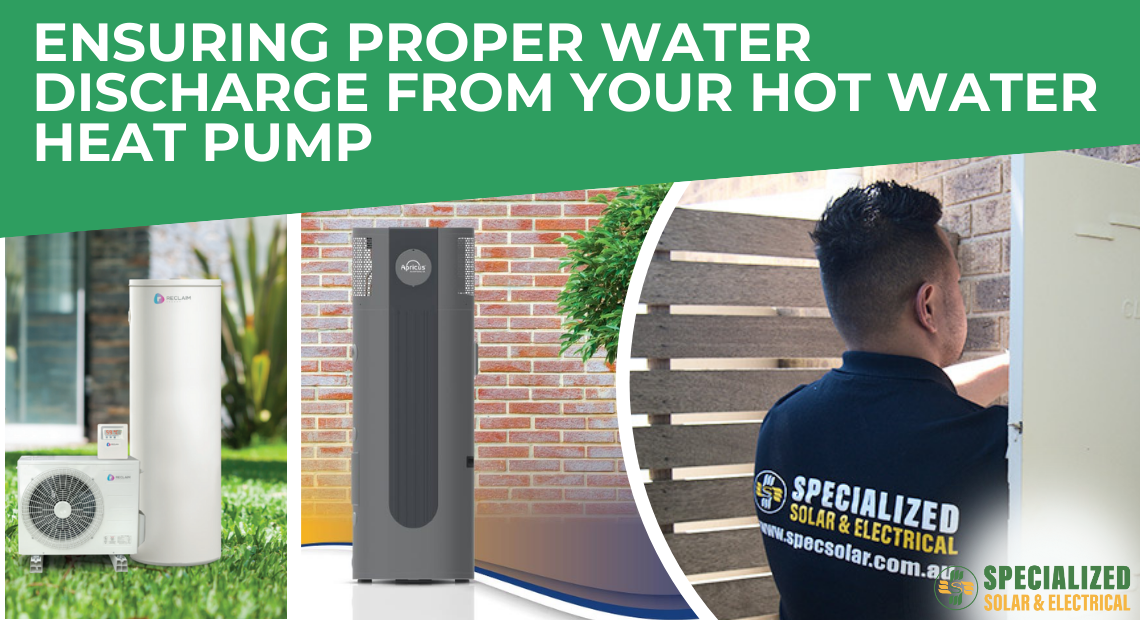In Australia, the discharge of excess water from an electric hot water heat pump’s condensation and relief valves must comply with plumbing standards and regulations to ensure safety and environmental protection. Here is the correct procedure to appropriately discharge the excess water.
Understand the Components
- Condensation Drain: This collects condensation formed during the heat pump operation.
- Temperature and Pressure Relief Valve (TPR Valve): This valve releases water if the temperature or pressure within the tank exceeds safe limits.
- Expansion Control Valve (ECV): This valve can also release water to manage pressure fluctuations.
Installation Requirements
Plumbing Regulations:
- Follow the Australian Standard AS/NZS 3500, which governs plumbing and drainage.
- Ensure all discharge pipes are appropriately sized and installed to handle the water flow from the valves.
Discharge Pipe Material and Size:
- Use corrosion-resistant materials like copper or appropriate plastic for discharge pipes.
- The pipe size should match or exceed the outlet size of the valve, typically no less than 20 mm for the TPR valve.
Pipe Configuration:
- Pipes should be directed downwards, sloping away from the unit to prevent backflow.
- Avoid sharp bends or restrictions that could impede water flow.
Discharge Location
Ground Level:
- Discharge pipes should terminate at ground level in a safe, visible location where the water will not cause damage or pose a hazard.
- Ensure the water is directed away from the building foundation to prevent erosion or water damage.
Drainage System:
- Preferably connect discharge pipes to a suitable drainage system, such as a stormwater drain or sewer, ensuring compliance with local council regulations.
- Use a tundish (a funnel-shaped device) if connecting to a drainage system, allowing air gaps and preventing cross-contamination.
Safety and Maintenance
Inspection:
- Regularly inspect discharge pipes and valves for blockages, leaks, or corrosion.
- Ensure that the discharge path remains clear and that there are no obstructions.
Water Temperature:
- Be aware that water from the TPR valve can be hot. Ensure the discharge location is safe and poses no risk to people or pets.
Signage and Awareness:
- Consider adding signage or warnings near the discharge area to alert people of potential hot water release.
Local Council Regulations
- Check Local Requirements: Regulations can vary by council or state, so it’s essential to check with your local authority or a licensed plumber to ensure compliance with any additional requirements specific to your area.
Summary
Appropriate discharge of excess water from an electric hot water heat pump involves proper installation of discharge pipes, compliance with Australian Standards, safe discharge locations, and regular maintenance. By following these guidelines, you ensure safe and effective water management while protecting your property and the environment. Always consult a licensed plumber to handle the installation and maintenance of these systems.












